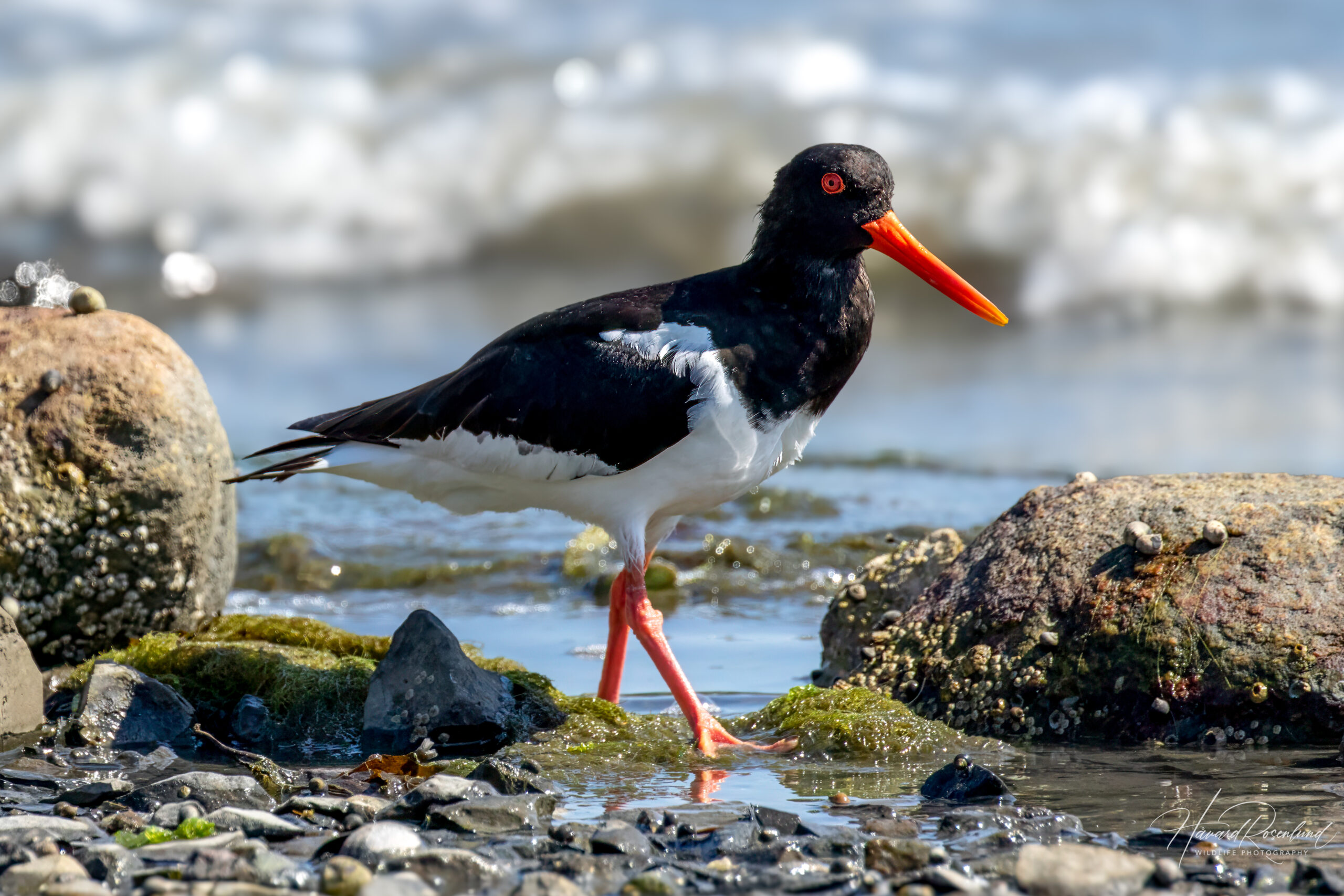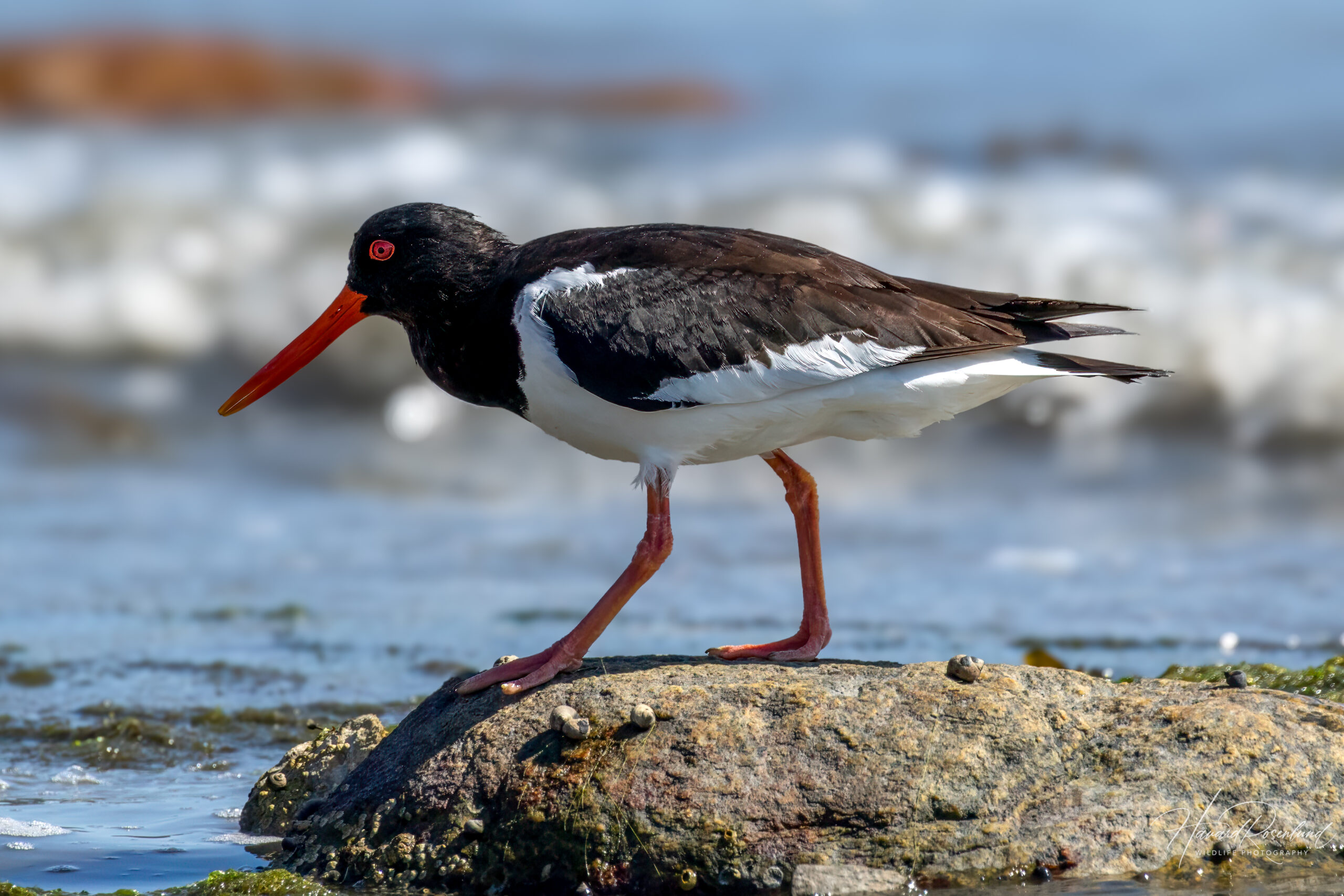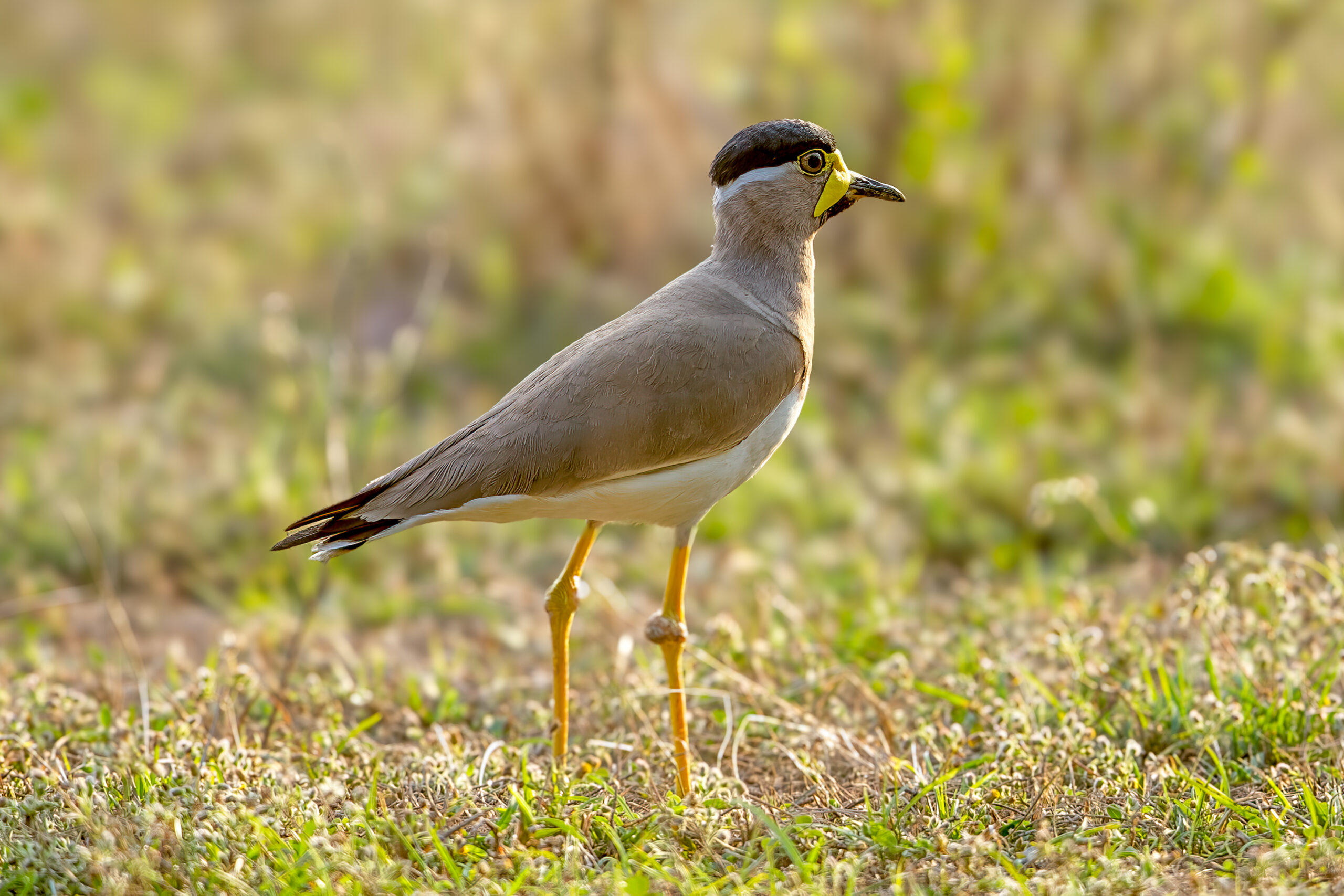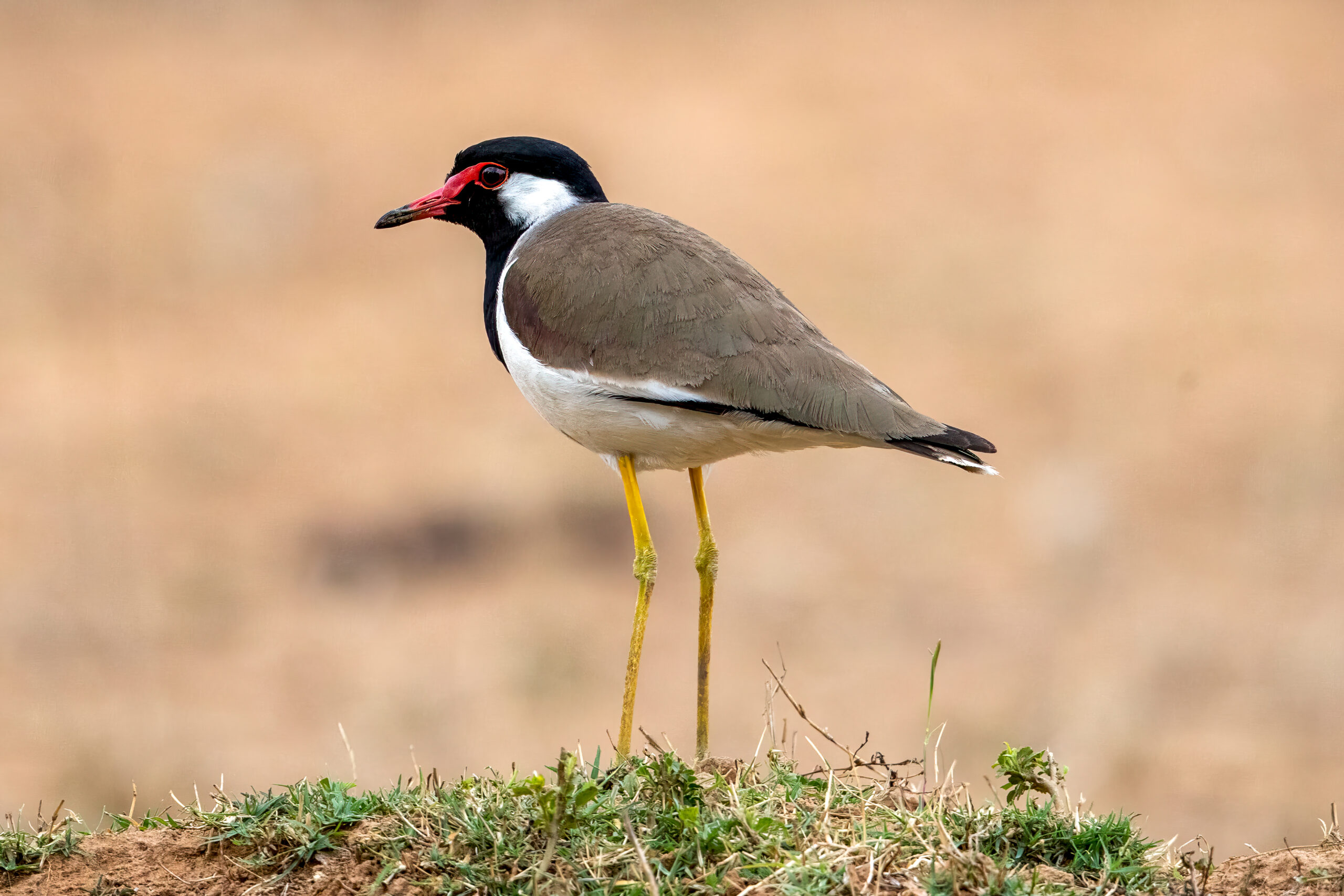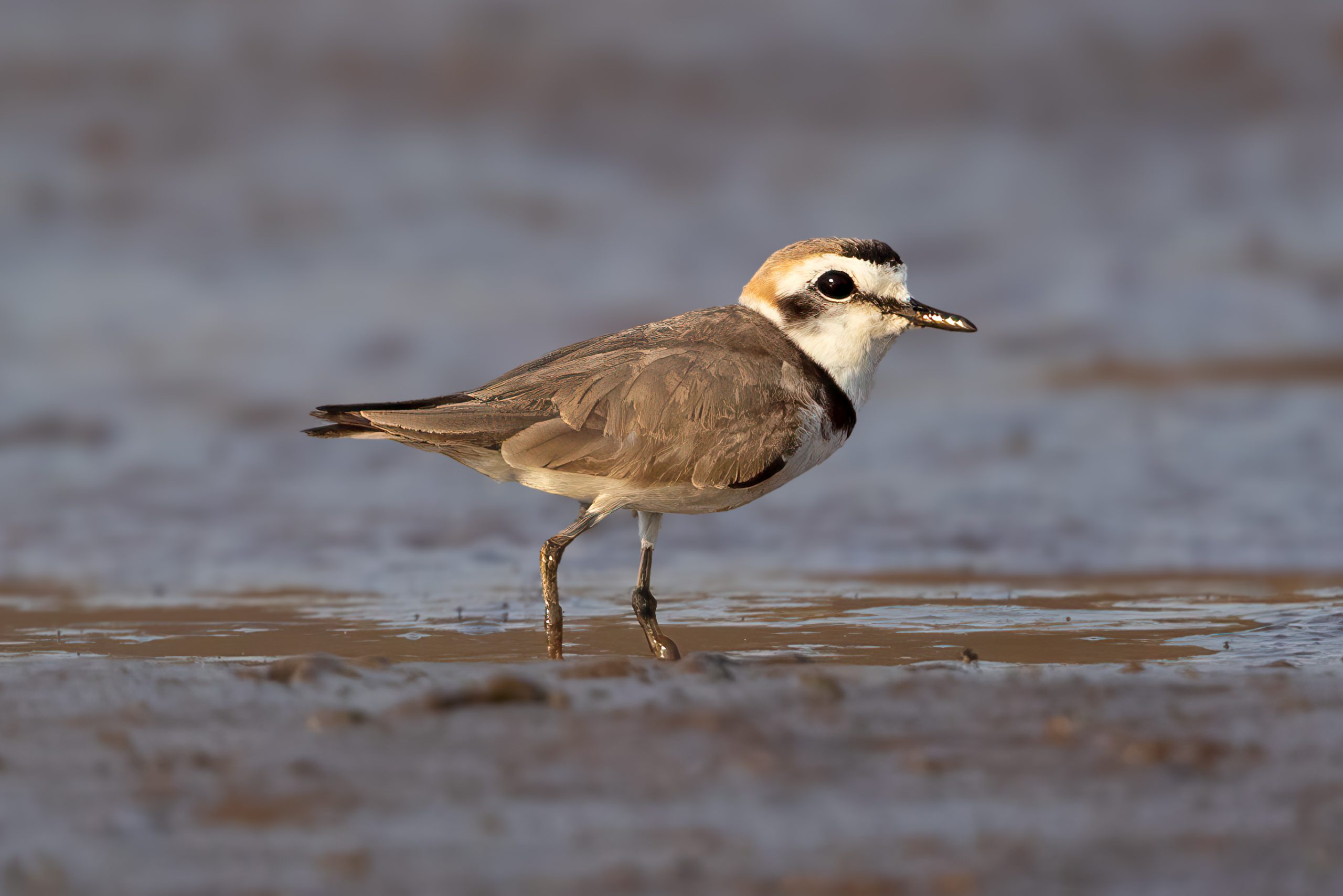Description
The Eurasian oystercatcher (Haematopus ostralegus) is a large wading bird native to coastal areas across Europe, Asia, and northern Africa. This bird is easily recognized by its black and white plumage and long, bright orange-red bill. It has a length of approximately 40-45 cm (15.7-17.7 in), with a wingspan of 80-85 cm (31.5-33.5 in). Oystercatchers are known for their loud and piercing calls, which are distinctive features of coastal soundscapes. During the winter, they often form large flocks, which can include several hundred birds.
There are several species of oystercatcher across the world. All species are either black-and-white, and very similar to the Eurasian oystercatcher, or entirely black. Key distinguishing features from similar species, such the American oystercatcher (Haematopus palliatus), is the Eurasian’s red eye and blacker backside, compared to a yellow eye and browner backside on the American species. The Eurasian species is also smaller than the very similar pied oystercatcher (Haematopus longirostris) from Australia.
Diet & habitat
Eurasian oystercatchers inhabit a range of coastal environments, from sandy beaches to rocky shores and mudflats. Their diet predominantly consists of bivalves, mollusks, and other small invertebrates, which they skillfully open with their robust bills. The technique involves either stabbing through or prying open their prey, demonstrating remarkable feeding specialization adapted to their niche.
Migration
These birds exhibit a mixture of migratory and resident behaviors. Populations breeding in northern Europe and East Asia typically migrate south to the Mediterranean and the coasts of Africa or South Asia during the winter months. The timing of their migration is closely linked to breeding cycles and food availability, with most birds departing their breeding grounds around August and returning in early spring.
Nesting
The breeding season of the Eurasian oystercatcher begins in April, with their nesting sites characteristically located on ground level, using natural cover or depressions. They lay two to four eggs, which both parents incubate for about 24-27 days. The chicks, which are precocial and quickly develop the ability to move and feed, fledge after approximately 35 days. Parental care is highly protective during this period, showcasing notable behaviors such as distraction displays against predators.
Status
The Eurasian oystercatcher is classified as near threatened globally on the IUCN Red List. This status reflects concerns over declining population trends in several regions, largely attributed to habitat loss from coastal development and disturbance, pollution, and the impacts of climate change such as rising sea levels. Conservation efforts are crucial to address these challenges and preserve the species’ habitats.






